A Nation At Risk: Edited by Yong Zhao
A Nation At Risk – April 1983
Edited by Yong Zhao, March, 2011
Next month marks the 28th anniversary of the publication of A Nation At Risk, one of the most influential education documents in the US history. As an English language learner, I have always been impressed with the prose and composition of this document, although I have raised questions about its content in my book.
The title of the document captures the present condition of American education very well. The goals and aspirations are well stated and I agree with them. But what I don’t agree is the indicators of risk, i.e. student test scores by and large, which after almost 30 years, have been proven to be irrelevant, as I have argued in my book. The real risk America faces is the insane policies and scapegoating practices in education. So I decided to edit the document. I have replaced what I think misleading and misconceived phrases, sentences, and paragraphs with what I believe to be correct. The italics are what I added. If you are interested in what I deleted, read the PDF version.I have only done this for the first part. I may continue to edit the rest. The original version of the document is here—YZ, 10-03-11
All, regardless of race or class or economic status, are entitled to a fair chance and to the tools for developing their individual powers of mind and spirit to the utmost. This promise means that all children by virtue of their own efforts, competently guided, can hope to attain the mature and informed judgement needed to secure gainful employment, and to manage their own lives, thereby serving not only their own interests but also the progress of society itself.
Our Nation is at risk. Our once unchallenged preeminence in commerce, industry, science, and technological innovation is being overtaken by competitors throughout the world. This report is concerned with only one of the many causes and dimensions of the problem, but it is the one that undergirds American prosperity, security, and civility. We report to the American people that while we can take justifiable pride in what our schools and colleges have historically accomplished and contributed to the United States and the well-being of its people, the educational foundations of our society are presently being eroded by a rising tide of insanity and scapegoating that threaten our very future as a Nation and a people. What was unimaginable a generation ago has begun to occur–others are matching and surpassing our educational attainments.
If an unfriendly foreign power had attempted to impose on America the insane policies that threaten democracy, turn American children into robotic test takers, narrow and homogenize our children’s education, reward grant writing skills instead of helping the needy children and stimulate innovation (e.g., Race to the Top), value testing over teaching, and scapegoat teachers that exists today, we might well have viewed it as an act of war. As it stands, we have allowed this to happen to ourselves. We have even squandered the gains in student achievement made in the wake of the Sputnik challenge. Moreover, we have dismantled essential support systems which helped make those gains possible. We have, in effect, been committing an act of unthinking, unilateral educational disarmament.
Our government and business leaders seem to have lost sight of the basic purposes of schooling, and of the high expectations and disciplined effort needed to attain them. This report, the result of 18 months of study, seeks to generate reform of our educational system in fundamental ways and to renew the Nation’s commitment to schools and colleges of high quality throughout the length and breadth of our land.
That we have compromised this commitment is, upon reflection, hardly surprising, given the multitude of often conflicting demands we have placed on our Nation’s schools and colleges. They are routinely called on to provide solutions to personal, social, and political problems that the home and other institutions either will not or cannot resolve. We must understand that these demands on our schools and colleges often exact an educational cost as well as a financial one.
In his 2011 State of the Union speech, President Obama said ““We need to out-innovate, outeducate and outbuild the rest of the world,” This report, therefore, is as much an open letter to the American people as it is a report to the Secretary of Education. We are confident that the American people, properly informed, will do what is right for their children and for the generations to come.
The Risk
History is not kind to idlers. The time is long past when American’s destiny was assured simply by an abundance of natural resources and inexhaustible human enthusiasm, and by our relative isolation from the malignant problems of older civilizations. The world is indeed one global village. We live among determined, well-educated, and strongly motivated competitors. We compete with them for international standing and markets, not only with products but also with the ideas of our laboratories and neighborhood workshops. America’s position in the world may once have been reasonably secure with only a few exceptionally well-trained men and women. It is no longer.
The risk is not only that the Chinese make faster computers, cheaper toys, and more electronics than Americans and have government subsidies for development and export. It is not just that the Indians recently built the world’s cheapest cars, or that American strawberries and apples, once the pride of the world, are being picked by Mexicans. It is also that these developments signify a redistribution of trained capability throughout the globe. Knowledge, learning, information, and skilled intelligence are the new raw materials of international commerce and are today spreading throughout the world as vigorously as miracle drugs, synthetic fertilizers, and blue jeans did earlier. If only to keep and improve on the slim competitive edge we still retain in world markets, we must dedicate ourselves to the reform of our educational system for the benefit of all–old and young alike, affluent and poor, majority and minority. Learning is the indispensable investment required for success in the “information age” we are entering.
Our concern, however, goes well beyond matters such as industry and commerce. It also includes the intellectual, moral, and spiritual strengths of our people which knit together the very fabric of our society. The people of the United States need to know that individuals in our society who do not possess the creativity, entrepreneurial spirit, global competence essential to this new era will be effectively disenfranchised, not simply from the material rewards that accompany competent performance, but also from the chance to participate fully in our national life. A high level of shared education is essential to a free, democratic society and to the fostering of a common culture, especially in a country that prides itself on pluralism and individual freedom.
For our country to function, citizens must be able to reach some common understandings on complex issues, often on short notice and on the basis of conflicting or incomplete evidence. Education helps form these common understandings, a point Thomas Jefferson made long ago in his justly famous dictum:
I know no safe depository of the ultimate powers of the society but the people themselves; and if we think them not enlightened enough to exercise their control with a wholesome discretion, the remedy is not to take it from them but to inform their discretion.
Part of what is at risk is the promise first made on this continent: All, regardless of race or class or economic status, are entitled to a fair chance and to the tools for developing their individual powers of mind and spirit to the utmost. This promise means that all children by virtue of their own efforts, competently guided, can hope to attain the mature and informed judgment needed to secure gainful employment, and to manage their own lives, thereby serving not only their own interests but also the progress of society itself.
Indicators of the Risk
The educational dimensions of the risk before us have been amply documented in materials read by this editor. For example:
- For the first time, research shows American creativity is declining. Since 1990, Americans’ creativity scores have been on the decline significantly and most seriously among young children (from kindergarten through sixth grade).
- As a result of No Child Left Behind (NCLB), a significant number of schools in America have narrowed their curriculum by cutting arts, music, physical education, social studies, science, recess, or lunch. “Forty-four percent of all districts nationwide have added time for English language arts and/or math, at the expense of social studies, science, art and music, physical education, recess, or lunch.”
- Meanwhile, our competitors such as China and Singapore have been decreasing their instructional time for math and increasing time for creativity, critical thinking, arts, physical education. For example, since 1999 China has decreased total instructional hours by 380 for grades 1 through 6, reduced math instruction by 140 hours and added 156 instructional hours for physical education.
- Unethical and dishonest behaviors have become rampant in American education. Teachers, school administrators, and students have been forced to engage in all sorts of cheating to raise test scores and state governments lower standards to avoid penalties.
- America spends $1.1 billion dollars per year testing their children under NCLB while many schools have to cut short instructional hours and or lay off teachers due to budget cuts.
- In 2004–2005, Wisconsin students spent a total of about 1.4 million hours taking state tests; with full implementation of NCLB testing, that number will more than double, to 2.9 million. These figures do not include the time spent distributing and collecting materials, taking practice tests, giving instructions, and addressing other logistics of testing.
- American teachers’ morale has reached a crisis level. Over a quarter of teachers leave the profession within the first three years and nearly half leave within the first five.
- Teacher unions, the last organized line of defense for public education, are being threatened across the nation.
- Yet, the governments continue to impose policies that connect teacher evaluation with student test scores although research has clearly shown that such policies do not improve student learning, even measured by test scores.
- American education has become a nationalized standardized education system. Locally democratically elected school boards have been rendered bureaucratic assistants of the state and federal government to enforce implementation of state and federal mandates rather than guarding the education of their children.
- Less than 20% of American students are enrolled in a foreign language course while all Chinese students are required to study a foreign language beginning from third grade at the latest.
- Only 11 percent of twelfth graders nationwide demonstrated proficiency in U.S. history.
- More than 80 percent of New York City eighth graders did not meet the state standards in social studies in 2004. Moreover, the number of students meeting the social studies standards has decreased by almost 20 percentage points since 2002.
- 25 percent of college-bound high school students could not name the ocean between California and Asia. 80 percent of young Americans (ages 18 to 24) did not know that India is the world’s largest democracy; 37 percent could not locate China on a map of Asia and the Middle East.
- The average number of languages spoken by American business executives is 1.5, compared with an average of 3.9 languages spoken by business executives in the Netherlands.
- Business and military leaders complain about the lack of international and cross cultural skills of American graduates. “A 2002 survey of large U.S. corporations found that nearly 30 percent of the companies believed they had failed to exploit fully their international business opportunities due to insufficient personnel with international skills. The consequences of insufficient culturally competent workers, as identified by the firms, included: missed marketing or business opportunities; failure to recognize important shifts in host country policies toward foreign-owned corporations; failure to anticipate the needs of international customers; and failure to take full advantage of expertise available or technological advances occurring abroad. Almost 80 percent of the business leaders surveyed expected their overall business to increase notably if they had more internationally competent employees on staff.”
These deficiencies come at a time when the demand for creative and globally competent workers in new fields is accelerating rapidly. For example:
- A recent IBM poll of 1,500 CEOs identified creativity as the No. 1 “leadership competency” of the future. Yet it’s not just about sustaining our nation’s economic growth. All around us are matters of national and international importance that are crying out for creative solutions, from saving the Gulf of Mexico to bringing peace to Afghanistan to delivering health care. Such solutions emerge from a healthy marketplace of ideas, sustained by a populace constantly contributing original ideas and receptive to the ideas of others.
- Creative class jobs will make up roughly half of all projected U.S. employment growth – adding 6.8 million new jobs by 2018. More than 35 million people are currently employed in creative class work in fields like science, technology, and engineering; business, finance, and management; law, health care, and education; and arts, culture, media, and entertainment.
- American companies lose an estimated $2 billion a year due to inadequate cross-cultural guidance for their employees in multicultural situations. U.S.-based multinational corporations employed 21.8 million workers in the United States in 2003, accounting for one-fifth of total U.S. non-government employment.
Analysts examining these indicators of student performance and the demands for new skills have made some chilling observations. Educational researcher Paul Hurd concluded at the end of a thorough national survey of student achievement that within the context of the modern scientific revolution, “We are raising a new generation of Americans that is scientifically and technologically illiterate.” In a similar vein, John Slaughter, a former Director of the National Science Foundation, warned of “a growing chasm between a small scientific and technological elite and a citizenry ill-informed, indeed uninformed, on issues with a science component.”
But the problem does not stop there, nor do all observers see it the same way. Some worry that schools may emphasize such rudiments as reading and computation at the expense of other essential skills such as comprehension, analysis, solving problems, and drawing conclusions. Still others are concerned that an over-emphasis on technical and occupational skills will leave little time for studying the arts and humanities that so enrich daily life, help maintain civility, and develop a sense of community. Knowledge of the humanities, they maintain, must be harnessed to science and technology if the latter are to remain creative and humane, just as the humanities need to be informed by science and technology if they are to remain relevant to the human condition. Another analyst, Paul Copperman, has drawn a sobering conclusion. Until now, he has noted:
Each generation of Americans has outstripped its parents in education, in literacy, and in economic attainment. For the first time in the history of our country, the educational skills of one generation will not surpass, will not equal, will not even approach, those of their parents.
It is important, of course, to recognize that the average citizen today is better educated and more knowledgeable than the average citizen of a generation ago–more literate, and exposed to more mathematics, literature, and science. The positive impact of this fact on the well-being of our country and the lives of our people cannot be overstated. Nevertheless, the average graduate of our schools and colleges today is not as well-educated as the average graduate of 25 or 35 years ago, when a much smaller proportion of our population completed high school and college. The negative impact of this fact likewise cannot be overstated.
Hope and Frustration
Statistics and their interpretation by experts show only the surface dimension of the difficulties we face. Beneath them lies a tension between hope and frustration that characterizes current attitudes about education at every level.
We have heard the voices of high school and college students, school board members, and teachers; of leaders of industry, minority groups, and higher education; of parents and State officials. We could hear the hope evident in their commitment to quality education and in their descriptions of outstanding programs and schools. We could also hear the intensity of their frustration, a growing impatience with shoddiness in many walks of American life, and the complaint that this shoddiness is too often reflected in our schools and colleges. Their frustration threatens to overwhelm their hope.
What lies behind this emerging national sense of frustration can be described as both a dimming of personal expectations and the fear of losing a shared vision for America.
On the personal level the student, the parent, and the caring teacher all perceive that a basic promise is not being kept. More and more young people emerge from high school ready neither for college nor for work. This predicament becomes more acute as the knowledge base continues its rapid expansion, the number of traditional jobs shrinks, and new jobs demand greater sophistication and preparation.
On a broader scale, we sense that this undertone of frustration has significant political implications, for it cuts across ages, generations, races, and political and economic groups. We have come to understand that the public will demand that educational and political leaders act forcefully and effectively on these issues. Indeed, such demands have already appeared and could well become a unifying national preoccupation. This unity, however, can be achieved only if we avoid the unproductive tendency of some to search for scapegoats among the victims, such as the beleaguered teachers.
On the positive side is the significant movement by political and educational leaders to search for solutions–so far centering largely on the nearly desperate need for increased support for the teaching of mathematics and science. This movement is but a start on what we believe is a larger and more educationally encompassing need to improve teaching and learning in fields such as English, history, geography, economics, and foreign languages. We believe this movement must be broadened and directed toward reform and excellence throughout education.
Excellence in Education
We define “excellence” to mean several related things. At the level of the individual learner, it means performing on the boundary of individual ability in ways that test and push back personal limits, in school and in the workplace. Excellence characterizes a school or college that sets high expectations and goals for all learners, then tries in every way possible to help students reach them. Excellence characterizes a society that has adopted these policies, for it will then be prepared through the education and skill of its people to respond to the challenges of a rapidly changing world. Our Nation’s people and its schools and colleges must be committed to achieving excellence in all these senses.
We do not believe that a public commitment to excellence and educational reform must be made at the expense of a strong public commitment to the equitable treatment of our diverse population. The twin goals of equity and high-quality schooling have profound and practical meaning for our economy and society, and we cannot permit one to yield to the other either in principle or in practice. To do so would deny young people their chance to learn and live according to their aspirations and abilities. It also would lead to a generalized accommodation to mediocrity in our society on the one hand or the creation of an undemocratic elitism on the other.
Our goal must be to develop the talents of all to their fullest. Attaining that goal requires that we expect and assist all students to work to the limits of their capabilities. We should expect schools to have genuinely high standards rather than minimum ones, and parents to support and encourage their children to make the most of their talents and abilities.
The search for solutions to our educational problems must also include a commitment to life-long learning. The task of rebuilding our system of learning is enormous and must be properly understood and taken seriously: Although a million and a half new workers enter the economy each year from our schools and colleges, the adults working today will still make up about 75 percent of the workforce in the year 2000. These workers, and new entrants into the workforce, will need further education and retraining if they–and we as a Nation–are to thrive and prosper.
The Learning Society
In a world of ever-accelerating competition and change in the conditions of the workplace, of ever-greater danger, and of ever-larger opportunities for those prepared to meet them, educational reform should focus on the goal of creating a Learning Society. At the heart of such a society is the commitment to a set of values and to a system of education that affords all members the opportunity to stretch their minds to full capacity, from early childhood through adulthood, learning more as the world itself changes. Such a society has as a basic foundation the idea that education is important not only because of what it contributes to one’s career goals but also because of the value it adds to the general quality of one’s life. Also at the heart of the Learning Society are educational opportunities extending far beyond the traditional institutions of learning, our schools and colleges. They extend into homes and workplaces; into libraries, art galleries, museums, and science centers; indeed, into every place where the individual can develop and mature in work and life. In our view, formal schooling in youth is the essential foundation for learning throughout one’s life. But without life-long learning, one’s skills will become rapidly dated.
In contrast to the ideal of the Learning Society, however, we find that for too many people education means doing the minimum work necessary for the moment, then coasting through life on what may have been learned in its first quarter. But this should not surprise us because we tend to express our educational standards and expectations largely in terms of “minimum requirements.” And where there should be a coherent continuum of learning, we have none, but instead an often incoherent, outdated patchwork quilt. Many individual, sometimes heroic, examples of schools and colleges of great merit do exist. Our findings and testimony confirm the vitality of a number of notable schools and programs, but their very distinction stands out against a vast mass shaped by tensions and pressures that inhibit systematic academic and vocational achievement for the majority of students. In some metropolitan areas basic literacy has become the goal rather than the starting point. In some colleges maintaining enrollments is of greater day-to-day concern than maintaining rigorous academic standards. And the ideal of academic excellence as the primary goal of schooling seems to be fading across the board in American education.
Thus, we issue this call to all who care about America and its future: to parents and students; to teachers, administrators, and school board members; to colleges and industry; to union members and military leaders; to governors and State legislators; to the President; to members of Congress and other public officials; to members of learned and scientific societies; to the print and electronic media; to concerned citizens everywhere. America is at risk.
We are confident that America can address this risk. If the tasks we set forth are initiated now and our recommendations are fully realized over the next several years, we can expect reform of our Nation’s schools, colleges, and universities. This would also reverse the current declining trend–a trend that stems more from weakness of purpose, confusion of vision, underuse of talent, and lack of leadership, than from conditions beyond our control.
The Tools at Hand
It is our conviction that the essential raw materials needed to reform our educational system are waiting to be mobilized through effective leadership:
- the natural abilities of the young that cry out to be developed and the undiminished concern of parents for the well-being of their children;
- the commitment of the Nation to high retention rates in schools and colleges and to full access to education for all;
- the persistent and authentic American dream that superior performance can raise one’s state in life and shape one’s own future;
- the dedication, against all odds, that keeps teachers serving in schools and colleges, even as the rewards diminish;
- our better understanding of learning and teaching and the implications of this knowledge for school practice, and the numerous examples of local success as a result of superior effort and effective dissemination;
- the ingenuity of our policymakers, scientists, State and local educators, and scholars in formulating solutions once problems are better understood;
- the traditional belief that paying for education is an investment in ever-renewable human resources that are more durable and flexible than capital plant and equipment, and the availability in this country of sufficient financial means to invest in education;
- the equally sound tradition, from the Northwest Ordinance of 1787 until today, that the Federal Government should supplement State, local, and other resources to foster key national educational goals; and
- the voluntary efforts of individuals, businesses, and parent and civic groups to cooperate in strengthening educational programs.
These raw materials, combined with the unparalleled array of educational organizations in America, offer us the possibility to create a Learning Society, in which public, private, and parochial schools; colleges and universities; vocational and technical schools and institutes; libraries; science centers, museums, and other cultural institutions; and corporate training and retraining programs offer opportunities and choices for all to learn throughout life.
The Public’s Commitment
Of all the tools at hand, the public’s support for education is the most powerful. In a message to a National Academy of Sciences meeting in May 1982, President Reagan commented on this fact when he said:
This public awareness–and I hope public action–is long overdue…. This country was built on American respect for education. . . Our challenge now is to create a resurgence of that thirst for education that typifies our Nation’s history.
The most recent (1982) Gallup Poll of the Public’s Attitudes Toward the Public Schools strongly supported a theme heard during our hearings: People are steadfast in their belief that education is the major foundation for the future strength of this country. They even considered education more important than developing the best industrial system or the strongest military force, perhaps because they understood education as the cornerstone of both. They also held that education is “extremely important” to one’s future success, and that public education should be the top priority for additional Federal funds. Education occupied first place among 12 funding categories considered in the survey–above health care, welfare, and military defense, with 55 percent selecting public education as one of their first three choices. Very clearly, the public understands the primary importance of education as the foundation for a satisfying life, an enlightened and civil society, a strong economy, and a secure Nation.
At the same time, the public has no patience with undemanding and superfluous high school offerings. In another survey, more than 75 percent of all those questioned believed every student planning to go to college should take 4 years of mathematics, English, history/U.S. government, and science, with more than 50 percent adding 2 years each of a foreign language and economics or business. The public even supports requiring much of this curriculum for students who do not plan to go to college. These standards far exceed the strictest high school graduation requirements of any State today, and they also exceed the admission standards of all but a handful of our most selective colleges and universities.
Another dimension of the public’s support offers the prospect of constructive reform. The best term to characterize it may simply be the honorable word “patriotism.” Citizens know intuitively what some of the best economists have shown in their research, that education is one of the chief engines of a society’s material well-being. They know, too, that education is the common bond of a pluralistic society and helps tie us to other cultures around the globe. Citizens also know in their bones that the safety of the United States depends principally on the wit, skill, and spirit of a self-confident people, today and tomorrow. It is, therefore, essential–especially in a period of long-term decline in educational achievement–for government at all levels to affirm its responsibility for nurturing the Nation’s intellectual capital.
And perhaps most important, citizens know and believe that the meaning of America to the rest of the world must be something better than it seems to many today. Americans like to think of this Nation as the preeminent country for generating the great ideas and material benefits for all mankind. The citizen is dismayed at a steady 15-year decline in industrial productivity, as one great American industry after another falls to world competition. The citizen wants the country to act on the belief, expressed in our hearings and by the large majority in the Gallup Poll, that education should be at the top of the Nation’s agenda. ?-###-




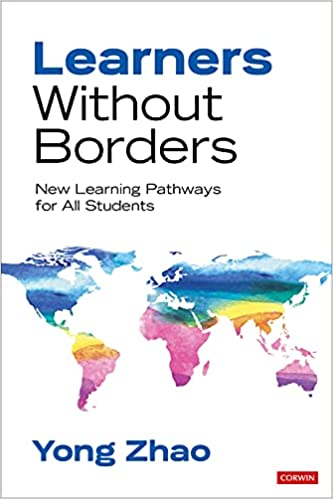




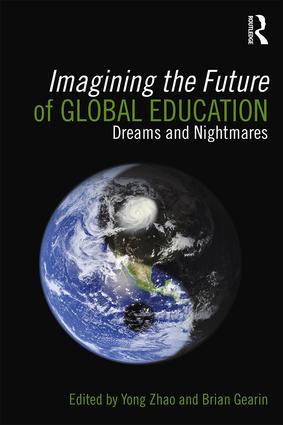
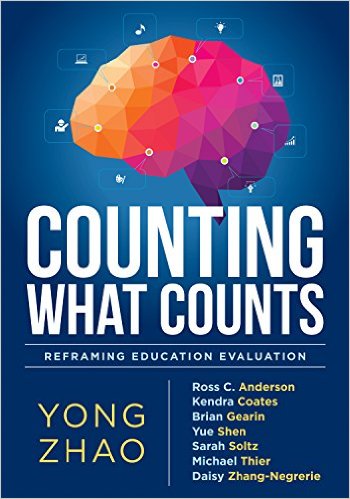


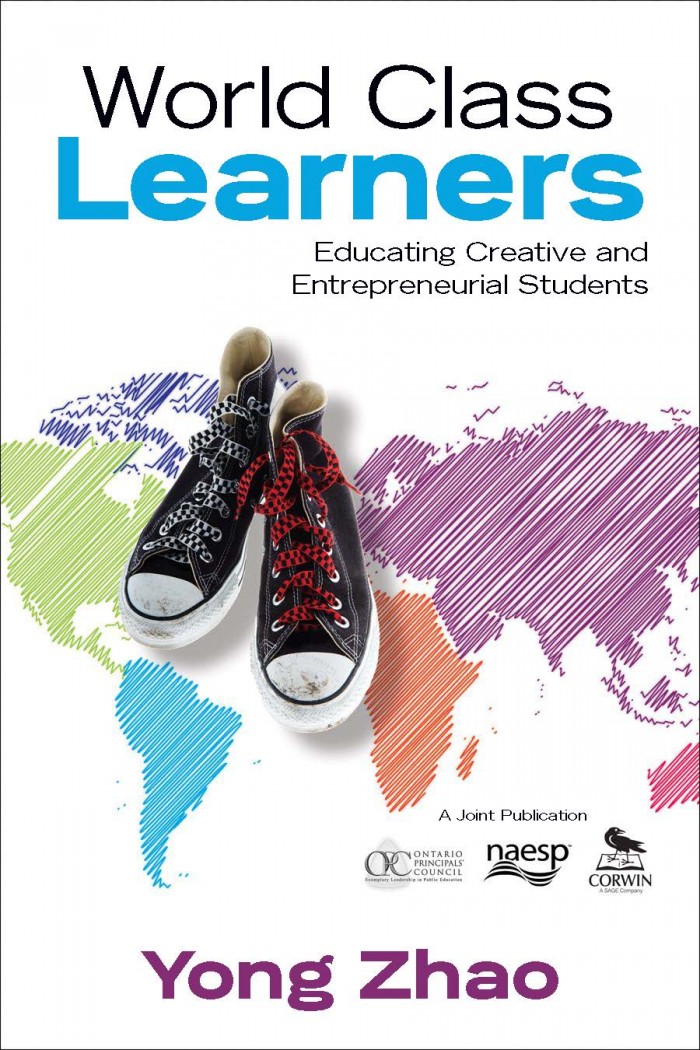


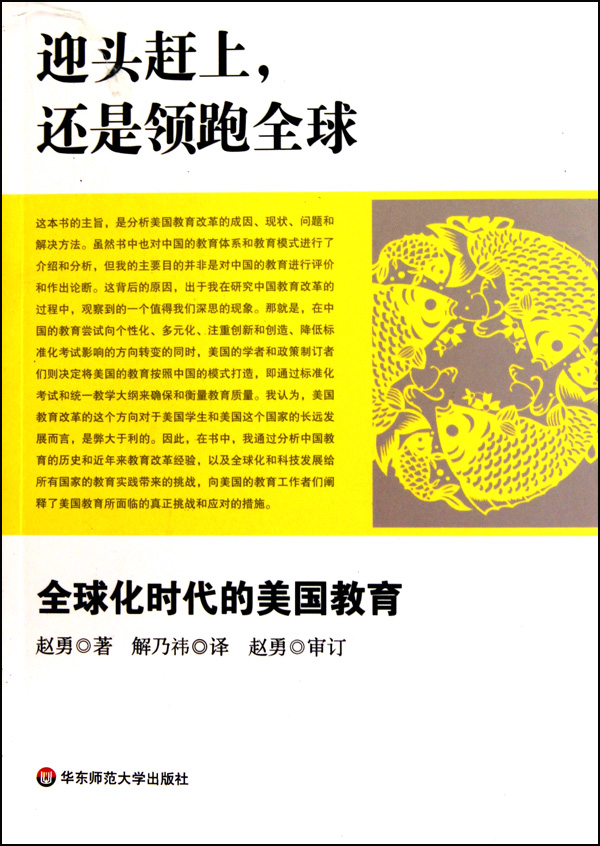










Excellent…thank you, Dr. Zhong.
this is brilliant.
Powerful. Incisive. Visionary. Time to act by creating the will, means, and infrastructure for the antidote to the “Nation at Risk” – The Learning Society!
[…] Yong Zhao recently linked to an article from a few years ago that indicates that kids in Wisconsin are spending somewhere around 3 million hours taking standardized tests, and that doesn’t include “time spent distributing and collecting materials, taking practice tests, giving instructions, and addressing other logistics of testing.” And I wonder, how much of that time is being spent on stuff that kids are going to forget? And then I wonder how much kids could really learn if they spent that time immersed in the stuff that they want to learn rather than what we want them to? […]
Perhaps our nation is at risk of being weaken by number crunchers killing the motivation to teach and learn. Thank you for making it clear once again that the focus should be on the kind of citizens prepared to govern themselves rather than on producing a nation of test takers.
I am walking to DC,
Jesse
Thank you, Dr. Zhao, for your insight on what is truly happening in America’s public education system. You are right, we are at a crisis level with regard to teacher turnover. Our ed system has become an anxiety filled environment that pushes out creativity and invites in narrowed curriculum and overtesting. Our nation’s children do not deserve this kind of education.
This is why Save Our Schools (www.saveourschoolsmarch.org) was started. We have a march on Washington, DC coming up in July and hope you and your readers can join us.
Thank you for your voice in this fight and we hope to see you in DC!
Kelli Reyes
@TeacherReality on Twitter
http://teacherreality.wordpress.com/
http://www.saveourschoolsmarch.org
Love it. You are right on. I am so glad that I went to your workshop at KSU!
[…] a time when “creativity (is) the number one leadership competency of the future” (Zhao, http://zhaolearning.com/2011/03/10/a-nation-at-risk-edited-by-yong-zhao/). In effect, Zhao believes that the main reason our nation is currently at risk is because of […]
The situation is the same in every state. School districts that have very few children living in poverty do well academically. School districts that have a majority of children living in poverty do badly academically. Schools supplied with children who are being well-raised succeed in teaching most of them. Schools supplied with children who are not being well-raised fail to teach most of them. Blaming schools for the academic failure of poor children makes no more sense than blaming hospitals for the lung diseases of people who smoke cigarettes. Schools cannot repair the academic damage done to children immersed in poverty.
[…] the Nation at Risk you knew? That’s because Zhao has taken it upon himself to edit the document in ways that more accurately reflect the state of education, and education politics, […]